Introduction
Diamond certification is an essential process that verifies the authenticity, quality, and characteristics of a diamond. Whether you are a buyer, seller, or investor, having a certified diamond ensures trust and transparency in the market. Certified diamond testing labs conduct thorough evaluations to provide an unbiased and accurate report on a diamond’s properties.
Understanding what happens inside a diamond testing lab can help jewellers and customers make informed decisions when purchasing or selling diamonds. From initial inspection to advanced spectroscopic analysis, the certification process involves multiple steps to ensure a diamond’s authenticity and quality.
What is Diamond Certification?
Diamond certification is a professional assessment conducted by a recognized certified diamond testing lab to determine a diamond’s authenticity and grade it based on internationally accepted standards. A certificate issued by these labs includes details about the diamond’s cut, colour, clarity, carat weight, fluorescence, and any treatments applied to the stone.
Why is Diamond Certification Important?
- Authenticity Verification – Confirms whether a diamond is natural, synthetic, or treated.
- Standardized Grading – Provides an objective evaluation based on scientific methods.
- Fair Market Value – Helps determine the diamond’s worth in the global market.
- Consumer Protection – Prevents fraud and misrepresentation in diamond transactions.
- Resale and Insurance Purposes – Certified diamonds have higher credibility for resale and insurance claims.
The Step-by-Step Process of Diamond Certification in a Testing Lab
1. Diamond Submission and Initial Inspection
When a diamond is submitted to a certified diamond testing lab, it is first registered and assigned a unique identification number. This ensures that the diamond can be tracked throughout the testing process.
The initial inspection involves checking for any visible characteristics, such as inclusions, surface blemishes, and color variations. A preliminary assessment helps determine the testing methods required for further analysis.
2. Diamond Authentication: Natural vs. Synthetic
One of the most crucial aspects of diamond certification is verifying whether the diamond is natural, synthetic, or treated. Labs use advanced gemological techniques to distinguish between naturally formed diamonds and lab-grown alternatives.
Authentication Methods:
- Magnification Analysis: Detects inclusions and growth patterns unique to natural diamonds.
- UV Fluorescence Testing: Synthetic diamonds may show different fluorescence responses.
- Infrared Spectroscopy (FTIR): Identifies chemical differences in the diamond’s structure.
If the diamond is determined to be synthetic or treated, the certification will specify this information clearly.
3. Grading the Diamond: The 4Cs (Cut, Color, Clarity, Carat Weight)
Once the diamond’s authenticity is confirmed, it is graded based on the universally accepted 4Cs system:
A. Cut Grading
The cut of a diamond determines its brilliance and overall appearance. A well-cut diamond reflects light beautifully, increasing its value.
- Excellent – Maximizes light reflection for superior brilliance.
- Very Good – Slightly less brilliant but still high-quality.
- Good – Decent sparkle but may have minor imperfections.
- Fair/Poor – Less reflective and may appear dull.
B. Color Grading
Diamonds are graded on a scale from D (completely colourless) to Z (noticeable yellow/brown tint). Colourless diamonds are more valuable than those with visible hues.
C. Clarity Grading
Clarity refers to the presence of internal inclusions or surface blemishes. The fewer inclusions, the higher the clarity grade:
- FL (Flawless) – No inclusions or blemishes visible under magnification.
- IF (Internally Flawless) – No internal inclusions, only surface imperfections.
- VVS1-VVS2 (Very Very Slightly Included) – Inclusions are difficult to see under magnification.
- VS1-VS2 (Very Slightly Included) – Minor inclusions visible under magnification.
- SI1-SI2 (Slightly Included) – Inclusions visible under magnification and sometimes to the naked eye.
- I1-I3 (Included) – Obvious inclusions that may affect durability and appearance.
D. Carat Weight Measurement
The diamond’s weight is measured in carats, with one carat equaling 0.2 grams. Even a slight increase in carat weight can significantly impact a diamond’s value.
4. Advanced Testing for Enhancements and Treatments
Some diamonds undergo treatments to enhance their appearance. Certified testing labs check for the following treatments:
- Laser Drilling – Used to remove inclusions.
- Fracture Filling – Enhances clarity by filling cracks with a clear substance.
- High-Temperature High-Pressure (HPHT) Treatment – Alters colour to make a diamond appear whiter.
- Irradiation and Annealing – Changes colour by exposing the diamond to radiation.
Any detected treatments are documented in the certification report to maintain transparency.
5. Spectroscopic and X-Ray Analysis
To further analyze the diamond’s composition, advanced instruments are used:
- UV-visible spectroscopy – Determines the diamond’s absorption spectrum.
- Raman Spectroscopy – Identifies molecular structures and potential treatments.
- X-Ray Diffraction (XRD) – Detects structural differences between natural and synthetic diamonds.
These tests provide conclusive data to ensure accurate certification.
6. Engraving and Certification Issuance
Once the grading process is complete, the certified diamond testing lab issues an official certification report. This document includes:
✔️ A detailed analysis of the diamond’s 4Cs.
✔️ Any detected enhancements or treatments.
✔️ Information on the diamond’s origin (natural or synthetic).
✔️ A unique identification number for tracking.
Some labs also offer laser inscription services, where the certificate number is engraved on the diamond’s girdle for added security.
Why Choose a Certified Diamond Testing Lab?
Choosing a reliable and accredited certified diamond testing lab ensures that diamonds are evaluated with the highest level of accuracy and integrity. Reputable labs follow strict international standards set by organizations like:
🔹 Gemological Institute of America (GIA)
🔹 International Gemological Institute (IGI)
🔹 American Gem Society (AGS)
🔹 Hoge Raad voor Diamant (HRD)
A certification from a well-known lab increases the diamond’s market value and provides confidence to buyers and sellers.
Conclusion
The process of diamond certification involves rigorous testing, grading, and documentation to ensure the authenticity and quality of a diamond. Certified diamond testing labs use advanced technology and expert gemologists to provide unbiased evaluations.
For buyers, a certified diamond offers peace of mind, knowing that the stone is accurately graded. For jewelers and investors, certification builds credibility and trust in the marketplace. Whether you are purchasing, selling, or investing in diamonds, working with a certified diamond testing lab guarantees that you receive a genuine and high-quality gemstone.
By understanding the intricate process of diamond certification, you can make informed decisions and protect your investment in the world of diamonds.

